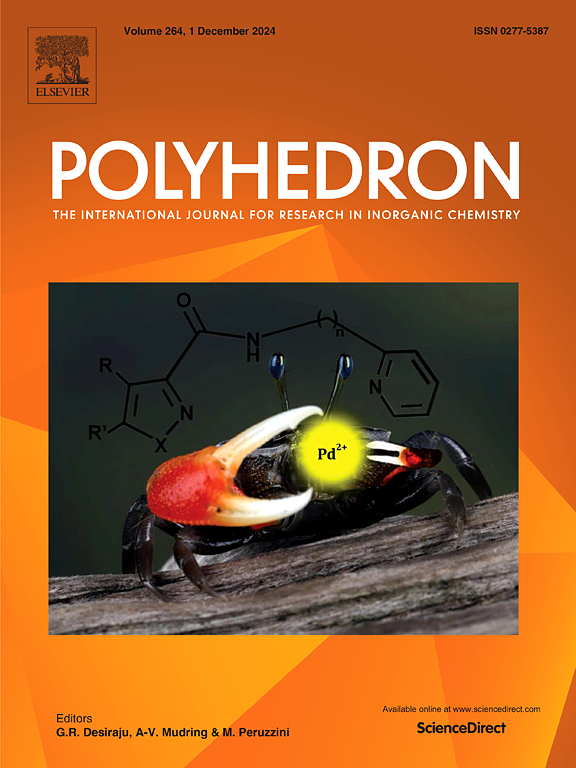Synthesis, characterization and luminescent properties of silver(I) complexes with 5-sulfosalicylic acid and imidazole derivatives
IF 2.4
3区 化学
Q2 CHEMISTRY, INORGANIC & NUCLEAR
引用次数: 0
Abstract
Three new Ag(I) coordination compounds, namely, (imH)2[Ag2(μ-Hssal)2(H2O)2] (1), {(2mimH)2[Ag2(μ3-Hssal)2(H2O)2]}n (2) and [Ag2(µ4-Hssal)(dmim)2]n (3) with 5-sulfosalicylic acid (H3ssal) and varying imidazole derivatives (imidazole (im), 2-methylimidazole (2mim), 1,2-dimethylimidazole (dmim)) were synthesized and characterized by IR spectroscopy, elemental analysis, thermal analysis, and single crystal X-ray diffraction techniques. While imidazole and 2-methylimidazole act as counter ions outside the coordination sphere as cations by undergoing proton transfer in complexes 1 and 2, 1,2-dimethylimidazole serves as a ligand in complex 3. Complex 1 is a binuclear compound while complex 2 is two-dimensional (2D) coordination polymer, and complex 3 is one-dimensional (1D) coordination polymer. The complexes 1–3 exhibite ligand-supported argentophilic Ag⋯Ag interactions. The luminescent properties of the complexes are also discussed.

求助全文
约1分钟内获得全文
求助全文
来源期刊

Polyhedron
化学-晶体学
CiteScore
4.90
自引率
7.70%
发文量
515
审稿时长
2 months
期刊介绍:
Polyhedron publishes original, fundamental, experimental and theoretical work of the highest quality in all the major areas of inorganic chemistry. This includes synthetic chemistry, coordination chemistry, organometallic chemistry, bioinorganic chemistry, and solid-state and materials chemistry.
Papers should be significant pieces of work, and all new compounds must be appropriately characterized. The inclusion of single-crystal X-ray structural data is strongly encouraged, but papers reporting only the X-ray structure determination of a single compound will usually not be considered. Papers on solid-state or materials chemistry will be expected to have a significant molecular chemistry component (such as the synthesis and characterization of the molecular precursors and/or a systematic study of the use of different precursors or reaction conditions) or demonstrate a cutting-edge application (for example inorganic materials for energy applications). Papers dealing only with stability constants are not considered.
 求助内容:
求助内容: 应助结果提醒方式:
应助结果提醒方式:


